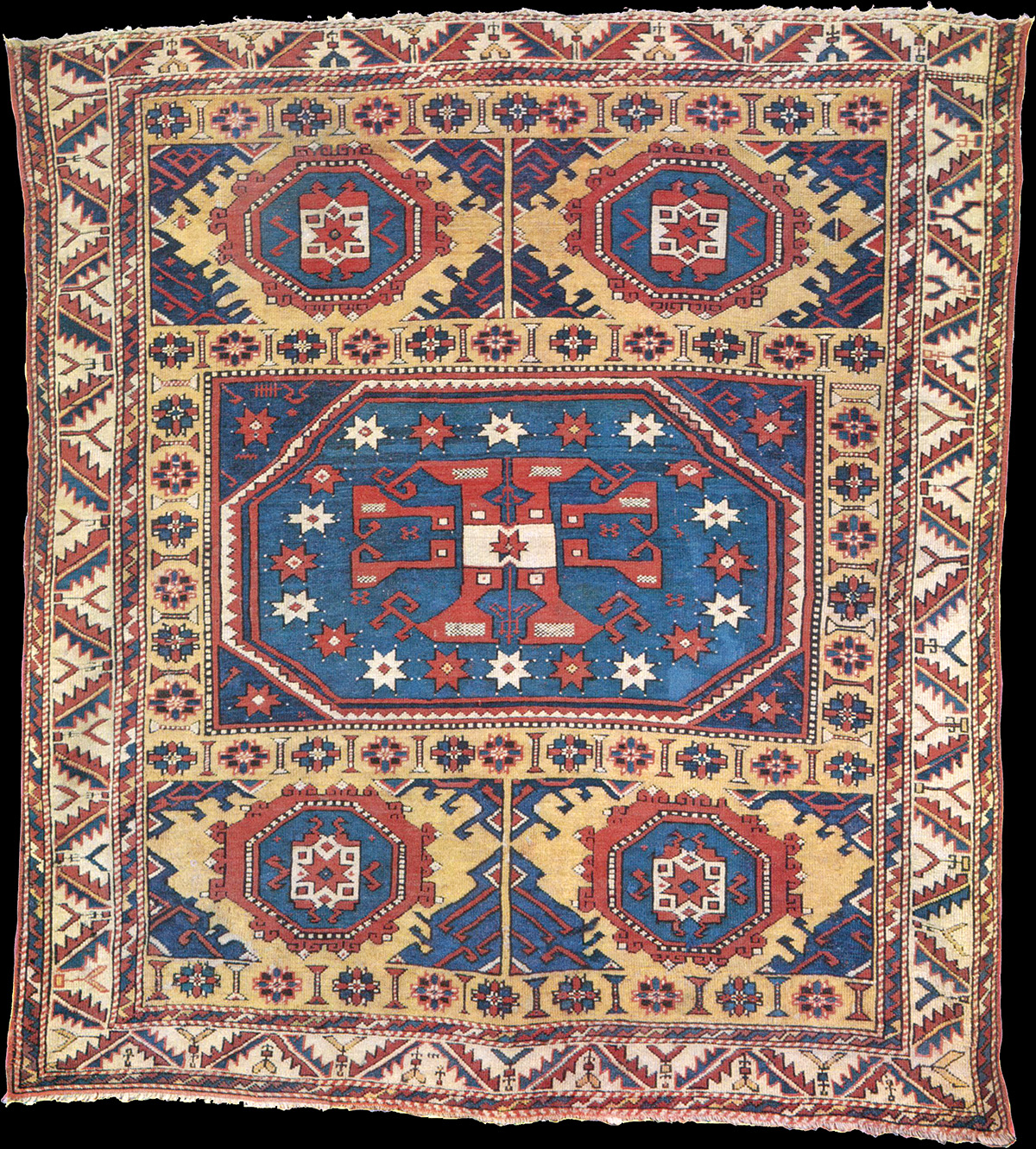|
"Holbein" Ezine Carpet, Western Anatolia (Canakkale region),
early XIX century. 5 feet 7 inches x 5 feet 1 inches. SL 70.205.14.
McMullan Colelction (published Islamic Carpets, Joseph V. McMullan).
1974.149.24. The Metropolitan Museum of Art, New York
In spite of the existence of identifiable fashions in carpets,
characteristic of specific periods and milieus, some carpets reveal the
persistence of perennial traditions. While the first category is represented
by the art of the court and the urban centers, the second group is formed by
the humbler village production.
As demonstrated by Western
paintings, there existed since the early fourteenth century numerous
carpets whose design consisted of a series of octagons formed by cutting
triangular corner pieces from rectangles. These units contained birds or
quadrupeds, at first used singly but later on in pairs. The scheme of
rectangles with octagons was still adhered to in the sixteenth century,
when, probably for reasons of religious orthodoxy, figural elements were
omitted and the animals were replaced by complex arrangements of stars.
These nonfigural carpets are referred to as large-patterned "Holbein"
carpets because they appear in so many of the pictures of Hans Holbein the
Younger. In certain instances, the large rectangles were surrounded by a
series of smaller ornamental octagons, which formed an inner frame within
the actual border. Still another innovation of the sixteenth century was
the alternation of the large rectangles with rows of two smaller ones,
which brought a welcome change of rhythm into the composition.
This nineteenth-century
McMullan carpet incorporates all of these early Anatolian features and is
clearly in the tradition of the sixteenth century, the heyday of Anatolian
carpet production. But this village rug harks even farther back: it quite
unexpectedly includes four pairs of birds in the large center unit, while
each of the four smaller octagons contains two summarily treated pairs and
two vestigial pairs at the sides.
In its well-matched colors and
balanced composition this simple carpet fully satisfies aesthetic demands
for a decorative, warming floor covering, but it contains another
dimension as well — its remembrance of an earlier type.

|

